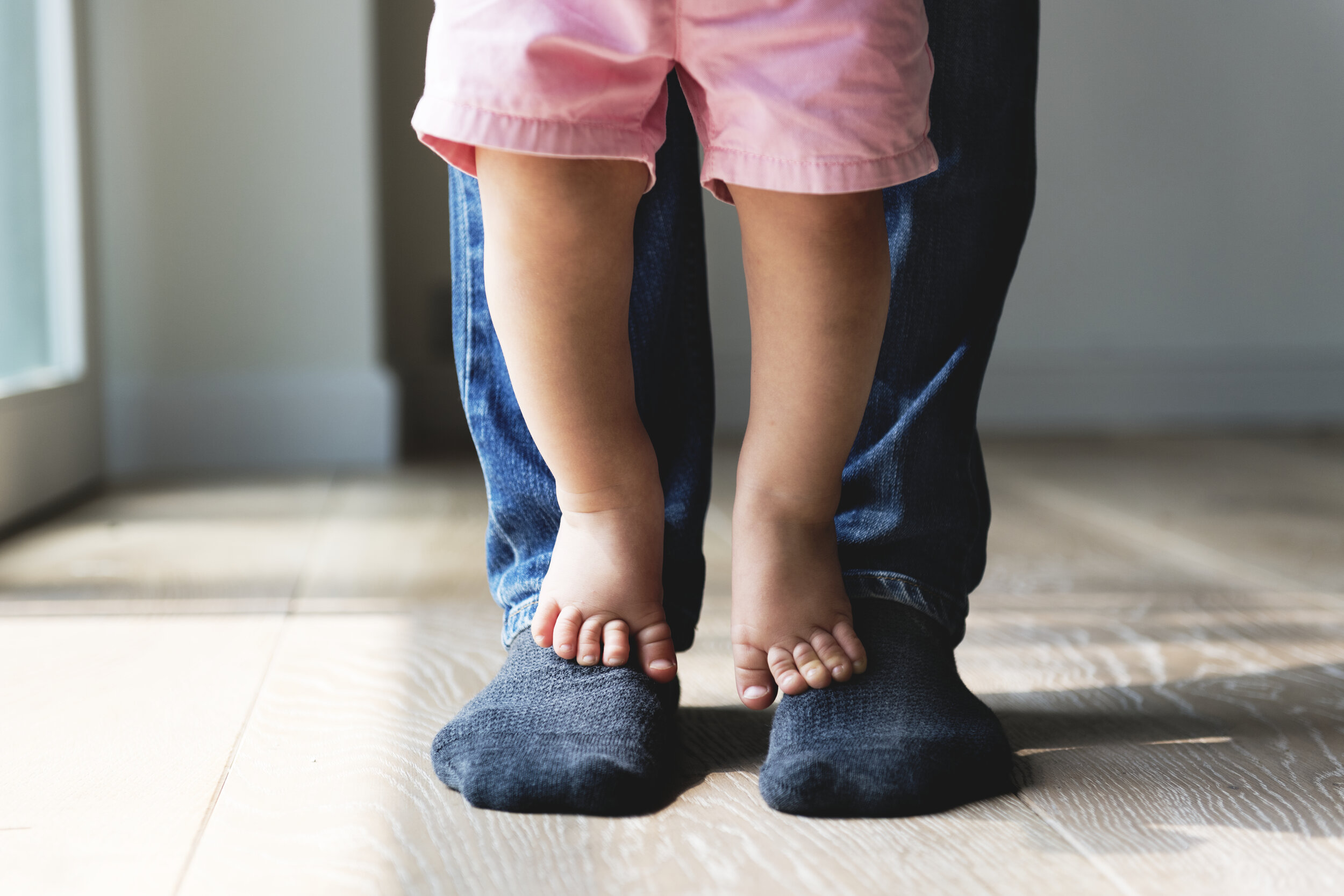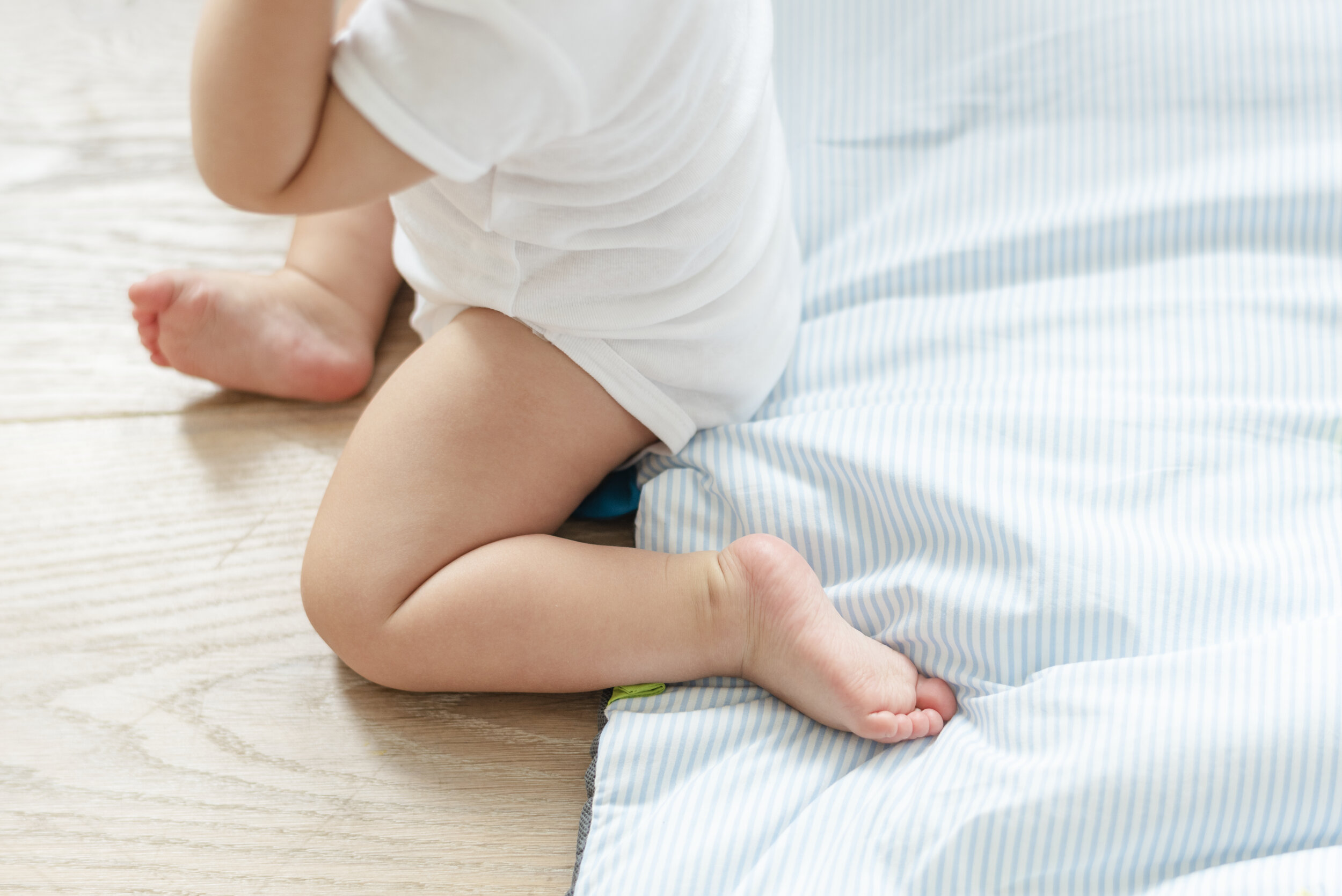Baby-wearing is beneficial for both the baby and caregiver. That being said, it is important to keep a few safety considerations in mind when using a carrier.
Hip position is key! The baby’s legs should be bent so that their knees are slightly higher than their bottom, with their tights spread around their caregiver and well supported. This will result in their legs creating an “M” position.
Your baby’s face should be in view at all times. You should not need to remove fabric to check on them.
Ensure your baby is not resting with their chin against their chest. This may restrict their airway. There should be at least one finger width under your baby’s chin.
The carrier should provide appropriate support for the baby’s neck and back. Remember that an infant’s back is naturally rounded. Do not use a carrier that forces the baby to straighten his/her spine.
Remember that the carrier should be safe and comfortable for the wearer too! Look for carriers/slings that evenly distribute the baby’s weight across the wearer’s body.
Happy baby wearing!
Disclaimer: This information is not intended to replace manufacturers’ recommendations.










